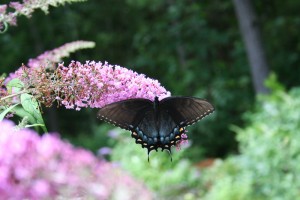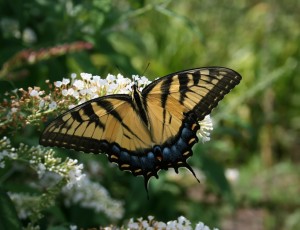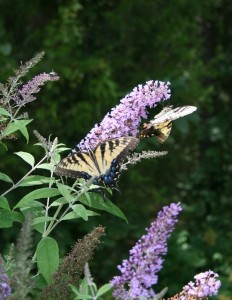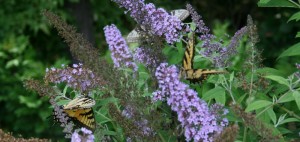When I shared pictures of the butterfly garden yesterday, I didn’t realize that other people were also seeing more butterflies in the garden this year. Someone said they heard on the local news that the abundant rainfall this year encouraged more butterflies to hatch, or have more babies or something, but I searched before writing this post and I couldn’t find anything in the news related to the butterflies. But they’re there, all right.
 |
| Female Eastern Tiger Swallow Tail |
 |
| Male or female? My guess, given the blue…female. |
 |
| Best guess — female on left, male on right |






I think everyone is having more butterflies this year. Quite the talk here in Cumberland. They are beautiful to see!
Thank you for posting this and the beautiful photos. I did think there were more swallowtails on our butterfly bushes this year, 2013. Thanks for reporting you see this, too. Teresa